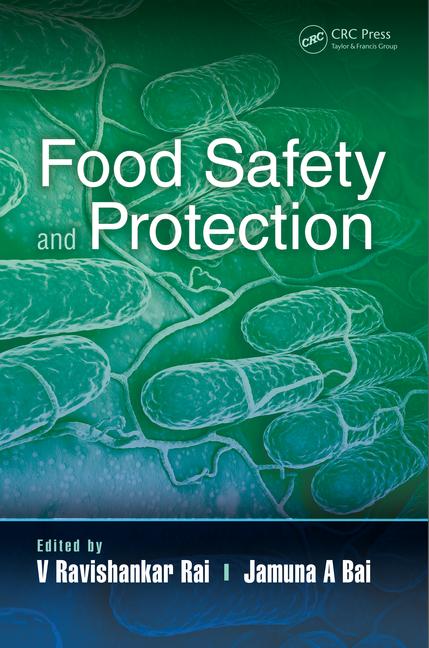Listeria monocytogenes Finds an Alternate Path to Cross the Gut Wall

During foodborne infection, Listeria monocytogenes crosses the host intestinal barrier and then spreads to deeper tissues. Internalin protein is thought to be the primary virulence factor helping L. monocytogenes invade and cross the gut wall. However, our new study[1] shows that Listeria adhesion protein (LAP) can open the gut epithelial wall, providing an alternate path for the bacterial systemic spread and making this pathogen a highly efficient invasive foodborne pathogen.
Foodborne Listeriosis
L. monocytogenes is an opportunistic but highly invasive foodborne bacterial pathogen. Pregnant women, newborn children, adults 65 and older, and people with weakened immune systems are most at risk. Listeriosis outbreaks are often associated with ready-to-eat (RTE) products including deli meats, hotdogs, liver pâté, and smoked fish, soft cheeses prepared from unpasteurized milk, ice cream, and produce such as frozen vegetables, cantaloupes, and apples. About 600 million people around the world contract listeriosis each year, with 420,000 dying, according to the World Health Organization. In the U.S., 1,600 people are infected each year, causing 260 deaths. Among the foodborne pathogens, L. monocytogenes has the highest hospitalization and case fatality rate, as high as 20–30%.[2,3] Because of the lack of an accurate infectious dose and high mortality among high-risk groups, the U.S. Department of Agriculture Food Safety and Inspection Service established a “zero tolerance” policy in RTE products. While the “zero tolerance” policy has been debated repeatedly among scientists and food processors, in absence of solid evidence about concrete infectious dose, this policy continues to be enforced. However, such regulation puts the food industry in a precarious position to follow compliance. Often, Listeria-tainted products are recalled, costing the food industry millions of dollars and negatively impacting brand reputations, inflicting even more financial damage.
Why Is Listeria Such a Problem?
In the early to mid-twentieth century, L. monocytogenes was recognized as an animal pathogen infecting primarily cows and sheep with “circling disease” and “abortion.” Animals suffer from meningitis and encephalitis, which result in the loss of balance forcing the animals to walk in a circle. Abortions are common in ewes. In the early 1980s, it was first recognized as a human foodborne pathogen when multiple large outbreaks with many fatalities were reported in North America. Researchers began to link this pathogen’s association with soil, manure, decaying vegetation, and environmental persistence[4] as the primary modes of transmission to meat and dairy processing plants and then onto RTE foods. It is highly adaptable and uses sophisticated genetic regulatory mechanisms to make the transition from a soil-living saprophyte to an invasive pathogen in humans and animals.[5]
Listeria Pathogenesis and Crossing of the Gut Barrier
L. monocytogenes is an intracellular bacterium, that is, once the bacterium encounter cells in the gut or other tissues, it invades, multiplies within the cellular compartment, and moves from one cell to other. This provides the bacterium a stealth lifestyle thus is protected from immune cells and antimicrobials. Our understanding of the comprehensive cellular pathogenic mechanism is largely owed to the pioneering works of, among many, Daniel Portnoy of the United States[6] and Pascale Cossart of France[7] are noteworthy.
The gastrointestinal tract is lined with a single layer of epithelial cells, which provide the first line of defense for luminal microbes from entering through the gut wall. In healthy humans, the epithelial barrier is tightly controlled, and it allows selective passage of nutrients, drugs, and small molecules, but it prevents passage of luminal microbes, including pathogens. Being a foodborne pathogen, for successful infection, L. monocytogenes must cross the gut barrier to arrive blood circulation or to mesenteric lymph nodes then onto liver, spleen, brain, and placenta (in pregnant women). It has been well established that for L. monocytogenes to cross the epithelial barrier, Internalin A (InlA), a major pathogenic protein, is responsible and is considered the most important protein for epithelial cell invasion.[7] Many researchers also showed that some L. monocytogenes isolates primarily from the environmental or food sources naturally carry a defective or nonfunctional InlA (truncated InlA with premature stop codon), and these isolates were shown to be less infective in mammalian cell culture or animal models.[8-10] These findings imply that foods containing L. monocytogenes with a defective InlA do not pose much threat, which brought into question the zero tolerance policy. Can the zero-tolerance policy be relaxed allowing a certain number of Listeria cells in RTE products, similar to the European Union Regulation (No 2073/2005) where fewer than 100 cells/25-g sample is permitted?[2,11]
Conversely, in recent years, many researchers began to raise critical questions about the importance of InlA in the gut wall crossing and pathogenesis. Evidence began to accumulate that L. monocytogenes strains with a defective InlA are indeed capable of causing disease, since such a strain was isolated from a neonatal listeriosis patient[12] and from fetuses of mice and guinea pigs challenged orally with this bacterium.[13]
Interestingly, although certain breeds of mice are sensitive to listeriosis, InlA-mediated invasion does not happen in mice, because the cellular receptor of InlA, E-cadherin, has an amino acid substitution that prevents its interaction with InlA.[14] Yet, mice infected with L. monocytogenes expressing murinized InlA (InlAm), which binds mouse E-cadherin with high affinity, do not appear to increase infectivity within 48 h of infection.[15] This finding further suggests that the InlA may not be required for L. monocytogenes to cross the intestinal wall, at least during the early stage of infection, which was further confirmed in a co-infection experiment using InlAm, wild-type or inlA-deletion mutant strains.[16]
LAP Helps Listeria Cross the Gut Barrier
Does L. monocytogenes use another pathway to cross the gut wall during the early stage of infection? Our group has identified a protein called LAP, which is an enzyme, alcohol acetaldehyde dehydrogenase required for bacterial growth under anaerobic conditions.[17,18] At the same time, LAP also helps L. monocytogenes attach to intestinal cells by interacting with a cellular receptor, called heat shock protein 60. Most recently, we observed that LAP helps L. monocytogenes cross the gut epithelial barrier through the paracellular route (in between cells), not only in a laboratory cell culture model[19] but also in mice.[1]. As stated above, InlA is nonfunctional in mice; thus, our research demonstrates that in the absence of InlA-mediated invasion, LAP helps bacteria cross the gut wall and spread to deeper tissues. Using genetic and cell biology tools, we have shown that LAP orchestrates a complex cell signaling event to activate a central regulatory molecule (NF-κB) and an enzyme (myosin light chain kinase) that regulate the opening and closing of the epithelial cell-cell junction.[1] Intestinal cell junction opening allows L. monocytogenes to cross the gut barrier very early in the infection process (in few hours) as soon as the bacterium reaches the intestine. This alternate pathway is believed to present in both humans and animal models and it is a very clever strategy for L. monocytogenes to use this alternate pathway in the early stage of infection when the immune system is not very active.
How Does This New Finding Influence Our Food Safety Practices?
This finding clearly reveals that L. monocytogenes rely on multiple pathways to infect a host. Most likely, L. monocytogenes use both LAP and InlA pathways to enter the host tissues, thus making it a very successful infective foodborne pathogen, especially in immunocompromised individuals. This may also explain why L. monocytogenes has the highest hospitalization and mortality rate among the foodborne pathogens.[3] Although our study[1] does not address the infective dose of L. monocytogenes in food, it indicates that L. monocytogenes cells even carrying a truncated InlA has the potential to be invasive. Allowing RTE foods to carry even a few L. monocytogenes cells would be a huge risk considering our growing populations with underlying chronic health conditions—diabetes, cancer, AIDS, smoking, alcoholism, and opioid addiction.
Acknowledgments
A part of this research is funded by the U.S. Department of Agriculture Agricultural research Service, AgSEED (Purdue University’s competitive internal grant program: Agricultural Science and Extension for Economic Development), and the Purdue Research Foundation.
Arun K. Bhunia, B.V.Sc., Ph.D., is a professor of food microbiology, Molecular Food Microbiology Laboratory, Department of Food Science, and Department of Comparative Pathobiology, Purdue University, West Lafayette, IN 47907, USA. He can be reached at bhunia@purdue.edu or 765.494.5443.
References
1. Drolia, R et al. 2018. "Listeria Adhesion Protein Induces Intestinal Epithelial Barrier Dysfunction for Bacterial Translocation." Cell Host & Microbe 23(4): 470–480.e7.
2. Lomonaco, S, D Nucera and V Filipello. 2015. "The Evolution and Epidemiology of Listeria monocytogenes in Europe and the United States." Infect Gene Evol 35:172–183.
3. Scallan, E et al. 2011. "Foodborne Illness Acquired in the United States—Major Pathogens." Emerg Infect Dis 17:7–15.
4. Welshimer, HJ and J Donker-Voet. 1971. "Listeria monocytogenes in Nature." Appl Microbiol 21:516–519.
5. Freitag, NE, GC Port and MD Miner. 2009. "Listeria monocytogenes from Saprophyte to Intracellular Pathogen." Nat Rev Microbiol 7:623–628.
6. Portnoy, DA, T Chakraborty, W Goebel and P Cossart. 1992. "Molecular Determinants of Listeria monocytogenes Pathogenesis." Infect Immun 60:1263.
7. Radoshevich, L and P Cossart. 2018. "Listeria monocytogenes: Towards a Complete Picture of Its Physiology and Pathogenesis." Nat Rev Microbiol 16:32.
8. Nightingale, K, K Windham, K Martin, M Yeung and M Wiedmann. 2005. "Select Listeria monocytogenes Subtypes Commonly Found in Foods Carry Distinct Nonsense Mutations in InlA, Leading to Expression of Truncated and Secreted Internalin A, and Are Associated with a Reduced Invasion Phenotype for Human Intestinal Epithelial Cells." Appl Environ Microbiol 71:8764–8772.
9. Olier, M et al. 2003. "Expression of Truncated Internalin A Is Involved in Impaired Internalization of Some Listeria monocytogenes Isolates Carried Asymptomatically by Humans." Infect Immun 71:1217–1224.
10. Van Stelten, A et al. 2011. "Significant Shift in Median Guinea Pig Infectious Dose Shown by an Outbreak-Associated Listeria monocytogenes Epidemic Clone Strain and a Strain Carrying a Premature Stop Codon Mutation in Inla." Appl Environ Microbiol 77:2479–2487.
11. Jordan, K and O McAuliffe. 2018. "Listeria monocytogenes in Foods." Adv Food Nutr Res (Published on line April 3, 2018).
12. Gelbicova, T, I Kolackova, R Pantucek and R Karpiskova. 2015. "A Novel Mutation Leading to a Premature Stop Codon in Inla of Listeria monocytogenes Isolated from Neonatal Listeriosis." New Microbiol 38:293–296.
13. Holch, A, H Ingmer, TR Licht and L Gram. 2013. "Listeria monocytogenes Strains Encoding Premature Stop Codons in InlA Invade Mice and Guinea Pig Fetuses in Orally Dosed Dams." J Med Microbiol 62:1799–1806.
14. Lecuit, M et al. 2001. "A Transgenic Model for Listeriosis: Role of Internalin in Crossing the Intestinal Barrier." Science 292:1722–1725.
15. Wollert, T et al. 2007. "Extending the Host Range of Listeria monocytogenes by Rational Protein Design." Cell 129:891–902.
16. Bou Ghanem, EN, GS Jones, T Myers-Morales, PD Patil, AN Hidayatullah and SE D'Orazio. 2012. "Inla Promotes Dissemination of Listeria monocytogenes to the Mesenteric Lymph Nodes during Food Borne Infection of Mice." PLoS Pathog 8:e1003015.
17. Jagadeesan, B et al. 2010. "Lap, an Alcohol Acetaldehyde Dehydrogenase Enzyme in Listeria Promotes Bacterial Adhesion to Enterocyte-Like Caco-2 Cells Only in Pathogenic Species." Microbiology 156:2782–2795.
18. Burkholder, KM et al. 2009. "Expression of LAP, a Seca2-Dependent Secretory Protein, Is Induced under Anaerobic Environment." Microbes Infect 11:859–867.
19. Burkholder, KM and AK Bhunia. 2010. "Listeria monocytogenes Uses Listeria Adhesion Protein (LAP) to Promote Bacterial Transepithelial Translocation, and Induces Expression of LAP Receptor Hsp60." Infect Immun 78:5062–5073.
Looking for a reprint of this article?
From high-res PDFs to custom plaques, order your copy today!








